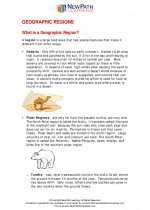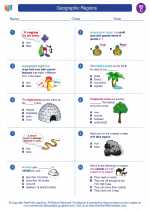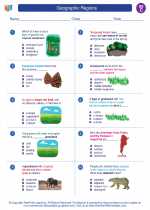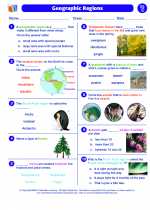Geographic Regions -> natural resources
Natural Resources
Natural resources are materials or substances that occur in nature and can be used for economic gain. They are the basis for all life on Earth and provide essential raw materials and energy for human consumption. Natural resources can be classified into two main types: renewable and non-renewable.
Renewable Resources
Renewable resources are those that can be replenished or replaced relatively quickly through natural processes. Examples of renewable resources include sunlight, wind, water, and forests. These resources are crucial for sustaining life and can be used without the fear of depletion.
Non-Renewable Resources
Non-renewable resources are finite and cannot be easily replenished once they are depleted. Examples of non-renewable resources include fossil fuels (coal, oil, natural gas), minerals, and metals. These resources take millions of years to form and are being consumed at a much faster rate than they can be replaced.
Importance of Natural Resources
Natural resources are essential for the functioning of societies and economies. They are used to produce goods, generate energy, and provide food and shelter. Without natural resources, human life as we know it would not be sustainable.
Conservation of Natural Resources
It is important to conserve natural resources to ensure their availability for future generations. Conservation efforts include sustainable use of renewable resources, reducing waste and pollution, and finding alternative sources of non-renewable resources.
Study Guide
- What are natural resources and why are they important?
- What are the two main types of natural resources?
- Give examples of renewable and non-renewable resources.
- Why is it important to conserve natural resources?
[Natural Resources] Related Worksheets and Study Guides:
.◂Social Studies Worksheets and Study Guides Third Grade. Geographic Regions

 Worksheet/Answer key
Worksheet/Answer key
 Worksheet/Answer key
Worksheet/Answer key
 Worksheet/Answer key
Worksheet/Answer key
 Worksheet/Answer key
Worksheet/Answer key
